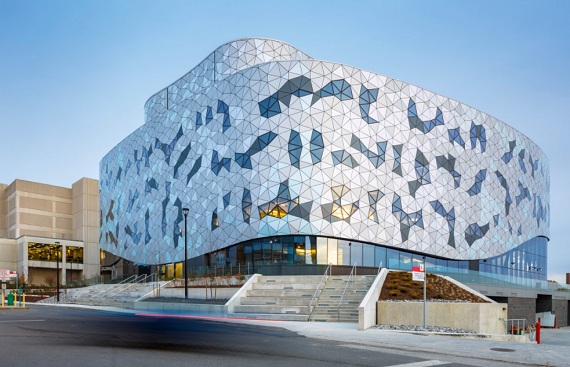The Role of Facade Engineering in Sustainable Building Design

Facade engineering is a crucial component of sustainable building design, driven by growing environmental concerns. It focuses on the planning, development, and maintenance of a building's outer layer, or facade, which has a big impact on energy efficiency, inside comfort, and environmental performance. Facade engineering improves energy use in buildings by utilising cutting-edge design strategies and technical breakthroughs. Engineers use a variety of techniques to maximise energy efficiency, with the facade serving as the key connection between indoor and outdoor areas. To minimise heat transmission, save energy costs for heating and cooling, and improve natural daylighting, they include using high-performance insulation, cutting-edge glass systems, and intelligent shading mechanisms. Moreover, facade engineering considers the overall sustainability of a building by integrating renewable energy sources such as solar or wind turbines into the facade design. Through these measures, facade engineering plays a pivotal role in creating environmentally friendly structures that endure and contribute to a greener future.
Optimizing Daylighting for Sustainable Building Design
![]()
A key component of sustainable building design is optimizing daylighting. Buildings may reduce their dependence on artificial lighting by effectively harnessing natural light, resulting in energy savings and lesser environmental impact. To do this, facade engineers use a variety of tactics, such as carefully examining the site's orientation and the nearby structures to maximize the intake of natural light. In order to allow the most amount of natural light to enter the interior spaces, windows, skylights, and light wells must be carefully placed. In order to control glare and solar heat gain, intelligent shading devices are also implemented, such as movable louvers or automatic blinds. And to disperse daylight more effectively and lessen the need for artificial lighting, walls, ceilings, and floors should be made of light-colored surfaces and materials. Furthermore, incorporating interior design elements that facilitate light diffusion and reflection, such as light shelves or light tubes, enhances daylight's overall quality and distribution. By prioritizing these daylighting strategies, sustainable buildings minimize energy consumption and create healthier and more comfortable spaces for occupants.
Enhancing Thermal Comfort: Enhancing thermal comfort and indoor air quality for creating healthy and sustainable indoor environments. To accomplish these objectives, facade engineering is significant. Engineers can construct a thermally efficient environment that eliminates excessive heating or cooling by designing facades that minimize heat gain or loss. Integrating efficient ventilation techniques into the facade, like heat recovery and natural ventilation systems, can improve indoor air quality while using less energy. Furthermore, the facade can serve as a noise barrier, promoting a calmer and more comfortable indoor environment. These measures ensure that the building occupants can take advantage of healthier, cozier surroundings while reducing the structure's environmental effect.
Integration of Renewable Energy
![]()
The integration of renewable energy sources is a crucial factor in achieving sustainability goals, and architectural design plays a significant role in this objective. The facades of sustainable buildings have the ability to maximize the use of renewable energy. In order to harness solar energy and turn it into electricity, facade engineers are essential to this process. They achieve this through installing solar panels and photovoltaic modules into the facade of the building. This allows the building to capture sunlight and convert it into usable electricity, reducing the dependence on traditional power grids. Additionally, putting small wind generators or turbines within buildings allows for the efficient utilisation of wind energy even in urban locations. These innovative methods harness wind energy and transform it into electricity, further increasing the building's energy efficiency. Buildings can expand their renewable energy sources by utilising both solar and wind energy, resulting in a more reliable and long-lasting power supply. Facade engineering, which mixes architectural design with environmentally friendly technologies, enables seamless utilisation of renewable energy sources. These renewable energy systems are incorporated into the building's front, making the structure a contributor to the production of clean energy. By using this strategy, the building's carbon footprint is decreased while simultaneously increasing its resistance to power interruptions and changes in energy prices.
In conclusion, facade engineering is crucial to the design of sustainable buildings because it improves thermal comfort, maximizes daylighting, and incorporates renewable energy sources. Facade engineers can design envelopes for structures that use the least energy, offer an aesthetically pleasing internal atmosphere, and have a smaller environmental effect by utilizing cutting-edge materials, technologies, and design principles. Facade engineering has a function that goes beyond aesthetics, focusing on meeting energy performance goals and enhancing occupant well-being and the importance of facade engineering in meeting the growing demand for environmentally friendly structures.
Read More News :
'Agni Prime' ballistic missile was successfully flight-tested by DRDO
Why Rakhibazaar.com is the best choice for international Rakhi delivery?



.jpg)